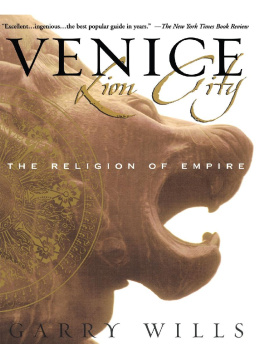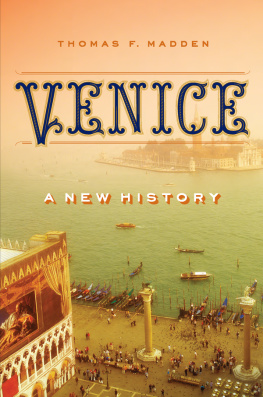LA SERENISSIMA

LA
SERENISSIMA
The Story of Venice
JONATHAN KEATES
www.headofzeus.com

A view on the Cannaregio Canal, 177580, by Francesco Guardi.
Samuel H. Kress Collection, Wikimedia Commons
First published in the UK in 2022 by Head of Zeus Ltd,
part of Bloomsbury Publishing Plc
Copyright Jonathan Keates, 2022
The moral right of Jonathan Keates to be identified as the author of this work has been asserted in accordance with the Copyright, Designs and Patents Act of 1988.
All rights reserved. No part of this publication may be reproduced, stored in a retrieval system, or transmitted in any form or by any means, electronic, mechanical, photocopying, recording, or otherwise, without the prior permission of both the copyright owner and the above publisher of this book.
A catalogue record for this book is available from the British Library.
ISBN [ HB ]: 9781789545050
ISBN [ E ]: 9781789545074
Colour separation by DawkinsColour
Head of Zeus Ltd
First Floor East
58 Hardwick Street
London EC1R 4RG
WWW . HEADOFZEUS . COM
Remembering Alex Burnett
Esto perpetua!
(May she live for ever!)
The last words of Fra Paolo Sarpi,
addressed to Venice on his deathbed in 1623.
CONTENTS
A Place of Refuge
Making Venetians
Another Byzantium
Traders and Travellers
The Crisis of Control
Saint Mark Victorious
Consisting of All Nations
An Italian Empire
Francesco Foscari A Doge in Profile
An Age of Uncertainty
The Politics of Envy
Lepanto: Victory Through Illusion
Trials of Faith
Daughters of Saint Mark
A Last Hurrah
Where Joy Resides
After the Fall
Venice Transformed
Between Two Wars
Survival and Identity

Maps Isambard Thomas, corvo-uk.com

Maps Isambard Thomas, corvo-uk.com

Maps Isambard Thomas, corvo-uk.com

Maps Isambard Thomas, corvo-uk.com
In Venice my thanks are due to the staff of the Biblioteca Marciana, the Biblioteca Correr, the Gallerie dellAccademia and to my colleagues and friends in the Associazione dei Comitati Privati per la Salvaguardia di Venezia.
In London, my thanks to the staff of British Library, the London Library and the Royal Society of Literature and to the Trustees of the Venice in Peril Fund.
Individual thanks go to the late John Julius Norwich, the late Gianni Guidetti, to Emma Bassett and Annabel Randall of the Venice in Peril office, to Richard Bassett, Anne Chisholm, Mrs G. Fallows, Hugh and Fanny Gibson, Sheila Hale, Robin Lane Fox and Jonathan Sumption.
Im especially grateful to my agent Peter Straus for overseeing the project at its various stages. At Head of Zeus I was lucky once again to be edited by Richard Milbank. My thanks to him, to Matilda Singer and Aphra Le Levier-Bennett. Elodie Olson-Coons was an exceptionally shrewd and thoughtful copy-editor. I would also like to thank Isambard Thomas for his layout, and Clmence Jacquinet for producing this book.
A final acknowledgement is due to all those friends who have accompanied me on visits to Venice since I first set foot there on an April morning in 1966. Their enthusiasm, curiosity and perceptiveness have continued to enhance my absorption with the city and its unique narrative. In this context, a particular thank you to the late Alex Burnett, dedicatee of this book, whose vision and understanding are always missed.
In accepting a commission to write this book, I was aware of what Goethe, as long ago as 1786, resignedly acknowledged, that about Venice everything that can be said has been said and printed. The present work is not a detailed historical account: for anything like that you need to turn to Frederic C. Lane, Alvise Zorzi or John Julius Norwich. Instead I have sought to focus on key moments in the evolution of this amazing city, as a unique community and built environment, over the course of its 1,600-year existence. I have included little or nothing, I realize, about Venices shifting relationship with mainland Italy across the centuries, about the changing ecology of its lagoon, about Murano glass, Burano lace and the role of Torcello in the early centuries of the Serene Republic. I hope, nevertheless, that some idea of my lifelong engagement with Venice, a work in progress, during which I go on learning, can transcend these limitations and omissions. We all have a share in her ongoing narrative, whether as an inspiration, an inheritance, a warning or a responsibility.

It is the evening of 17 March 1846, and we have been invited to the first performance of a new opera at Venices Gran Teatro La Fenice. The theatre is not the original building by the architect Antonio Selva, opened in 1792. That unfortunately burned down some forty years later, leaving only the portico and the delightful Sale Apollinee assembly rooms immediately behind it intact. An immediate reconstruction by the brothers Giambattista and Tommaso Meduna and their team of expert craftsmen, aided by the stage designer Giuseppe Borsato, has resulted in one of the most elegant and lavishly adorned theatres in Italy, challenged only by Milans La Scala and the Teatro San Carlo in Naples as a temple of the musical arts.
There are five rows of gilded and curtained boxes, converging on the massive central Palco Imperiale , with its pink velvet swags topped by the crown of the Habsburgs. For Venice, since 1814, has been part of the Austrian empire, whose representative, Governor Count Lajos Plffy zu Erddy, will be present tonight, along with his staff, for whom Borsato has designed three smaller boxes below. In the area between this and the orchestra there is a scatter of chairs but most of the audience are happy to stroll about and sit down only if they fancy it. In this particular section of the horseshoe auditorium there are no women present and most of the men are wearing their black top hats. The orchestra remains fully on display, as in other opera houses at this period, and the conductor will direct the performance from an armchair. A good number of those present down here have come principally to see the ballet, a key feature of this evenings entertainment, since the star ballerina in La Jolie Fille de Gand is none other than Fanny Elssler, the Viennese dancer who has captivated Europe and America with her virtuoso footwork.

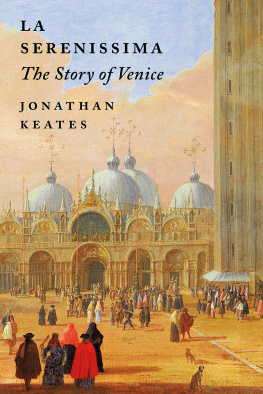


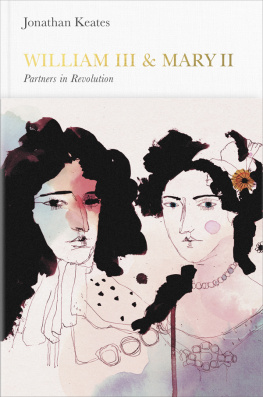


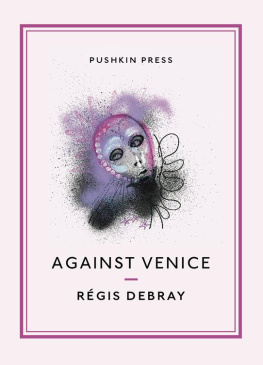
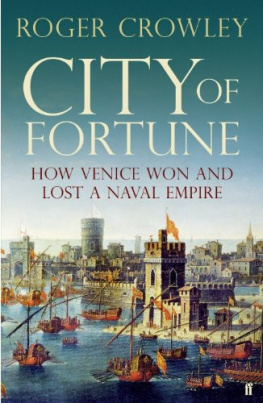
![Bosworth - Italian Venice: a history[Electronic book]](/uploads/posts/book/194557/thumbs/bosworth-italian-venice-a-history-electronic.jpg)
